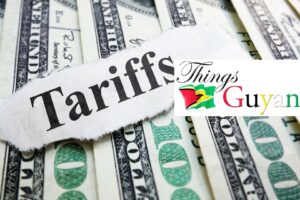Guyanese Creole, also known as Creolese, is a fascinating linguistic phenomenon that reflects Guyana’s rich cultural heritage and history.
This form of language is spoken by the majority of the population, including indigenous people and recent migrants to Guyana.
WAT DAT IS – ORIGINS AND HISTORY
Guyanese Creole English has its roots in Guyana’s colonial history. The language developed during European colonisation, particularly under Dutch and British rule.
The arrival of African slaves, indentured labourers from India, and other immigrant groups further enriched the linguistic landscape of the region.
The language evolved as a means of communication among these diverse groups, blending elements of English with African languages, Indigenous languages, and various other influences.
There are three main varieties of Creolese: Acrolect (spoken by the upper class) and Mesolect (spoken by the middle class). There is also Basilect (spoken by illiterate rural laborers).
Additionally, there are numerous sub-dialects of Guyanese Creole, which vary based on geographical location and the speakers’ racial and ethnic background.
For instance, a unique form of Guyanese Creole is spoken in areas along the Rupununi River, where the population is predominantly Amerindian.
CHARACTERISTICS OF GUYANESE CREOLE ENGLISH
This language is characterised by a number of unique features that set it apart from standard English.
One of the most notable aspects of the language is its pronunciation, which often differs significantly from standard English.
For example, the “th” sound is commonly replaced with a “d” or “t” sound, so “this” becomes “dis” and “that” becomes “dat.”
Some examples of Guyanese Creole are:
- Ah go do it – I will do it.
- Dis wata de col col – This water is very cold.
- Mi tel am – I told him.
- Dem nuh wan fi tell dem’ – They don’t want to tell them.
The grammar of Guyanese Creole English also differs from standard English in several ways. One notable feature is the use of tense markers, which are often omitted or used inconsistently.
For example, the sentence “He gone to town” is used to indicate that someone has already gone to town, whereas in standard English, one would say, “He has gone to town.”
Vocabulary is another area where Guyanese Creole English shows its unique character. The language incorporates words and expressions from a variety of sources, including African languages, Indigenous languages, and other Caribbean Creole languages.
This rich vocabulary adds colour and depth to the language, allowing speakers to express themselves in familiar and distinctive ways.
CAN’T SUCK CANE AND BLOW WHISTLE – CREOLE THROUGH PROVERBS
While Creole is indeed fascinating, we have proverbs that are used by Guyanese people on a daily basis.
Monkey know which limb fuh jump pun – This means that people are aware of the weaknesses of others and the things they would try with some, would not even consider with others.
Furthermore, we have – Yuh can’t suck cane and blow whistle. This statement basically says that one may be able to multi-task, but there are some things you cannot do simultaneously with another task.
CULTURAL SIGNIFICANCE
Guyanese Creole English plays a central role in Guyana’s cultural life and is a powerful symbol of the country’s history and identity.
The language is used in a wide range of contexts, from everyday conversations to literature, music, and theater.
In literature, Guyanese Creole English is often used to capture the rhythms and nuances of everyday life in Guyana. Writers such as Edgar Mittelholzer, Wilson Harris, and Fred D’Aguiar have all used the language to great effect in their writings, creating a rich literary tradition that reflects the diversity and complexity of Guyanese culture.
In music, Guyanese Creole English is a key element of many popular genres, including reggae, soca, and chutney.
Artists such as Eddy Grant, Dave Martins, and Terry Gajraj have all used the language in their songs. This helped to popularise Guyanese music both at home and abroad.
HAVE GUYANESE LOST THEIR CREOLE IDENTITY?
Over the years, Guyanese have lost some aspects of their Creole identity. The use of standard English greatly influences this loss.
In today’s society, when one speaks in Creole, they are quickly corrected in standard English.
While Creole identity remains in many aspects of Guyanese culture, it has undoubtedly evolved and been influenced by external forces. This has led to some loss of its original form.
References
- https://guyaneselanguagesunit.com/
- https://en.wikipedia.org/wiki/Guyanese_Creole
- https://guyanesecreole.commons.gc.cuny.edu/2018/03/10/guyanese-creole-feature-of-linguistics/
- https://lettersfromguyana.wordpress.com/2017/01/29/me-na-able-creolese-101/







